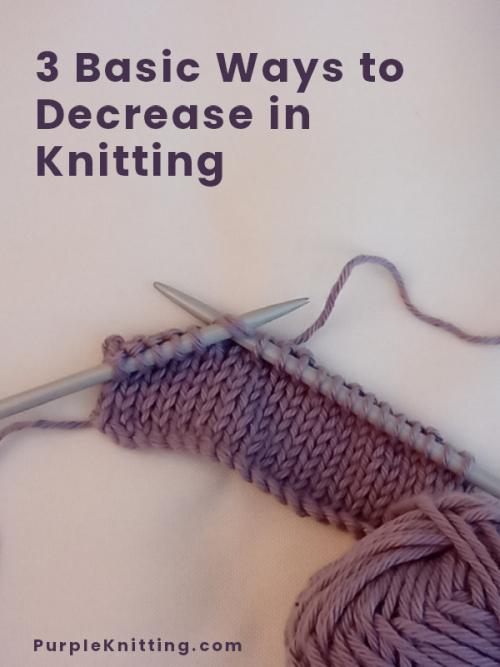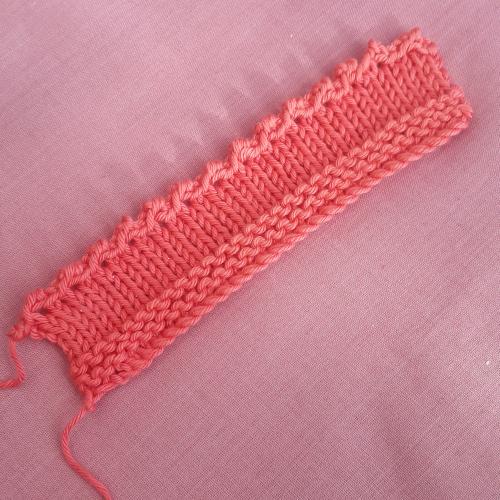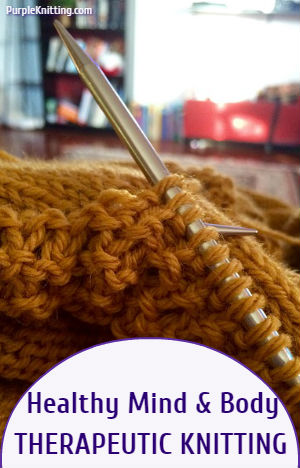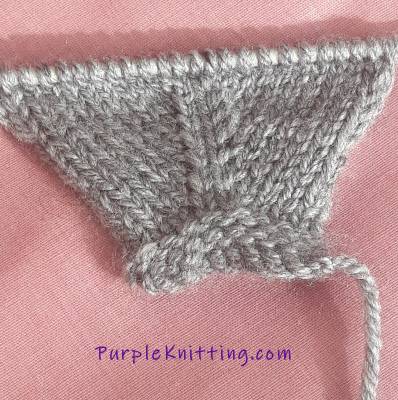
In this post, you will learn 3 basic ways to decrease stitches in your knitting.
Once you have learned the foundational knitting techniques of how to cast on, do the knit and purl stitches, and cast off, you need to familiarize yourself with how to add to and reduce the number of stitches you are working with.
In most cases, the pattern will tell you which type they need you to do. Watch the video below to find out the technique for each of the three.
There is nothing worse than having to stop working a pattern because you are not sure of what to do. Learn these easy skills now to save time and frustration later.
Contents
Knit 2 stitches together abbreviated to k2tog
Instead of putting the right-hand needle into the front of the first stitch on the left-hand needle, put it into the second stitch first then into the first stitch – then knit the two of them at once – ie knit 2 together.
In knitting patterns, you will find that this kind of decrease is abbreviated to k2tog
k2tog is a right-leaning decrease
If you look at your work once you have completed a k2tog you will see that the stitches that are knitted together lean to the right. This is because the top stitch is being pulled together with the other one to the right-hand side of the work. It is for this reason that this kind of decrease is called a right-leaning decrease
If you are purling a row then you may be asked to purl 2 stitches together to decrease on a purl row – p2tog
Slip Knit Pass – skp
For this technique, you simply slip one stitch from the left-hand needle to the right one. Then knit the next stitch as normal. Finally, you pass the first slipped stitch that is now on the right-hand needle over the knitted one next to it – effectively getting rid of one stitch.
In the patterns this is shortened to skp
skp is a left-leaning decrease
A skp decrease will cause the resulting stitch to lean to the left.
Another left-leaning decrease is the SSK or slip slip knit decrease
SSK -slip slip knit
Watch the video below to see how to do a ssk decrease
The ssk decrease is a left-leaning decrease
Just like the skp the ssk also leans to the left.
Summary of ssk
To do the ssk decrease, slip the first stitch onto the right-hand needle in a knit-wise fashion, then slip the second stitch in this way also, now put your left-hand needle through the front of these slipped stitches and knit them together.
Practise these decreasing techniques:
- k2tog – knitting 2 stitches together
- skp – slip knit pass slipped stitch over
- ssk slip 1 knitwise, slip 1 knitwise, knit 2 together through the front of 2 slipped stitches
With practice, you’ll soon feel comfortable with them and will do them without really concentrating too hard.
Next steps ….
Now that you have mastered these basic decreasing techniques why not put them into practice by choosing a knitting project that uses them? Knitted toys and animals often use decreases ( and increases ) to make the shapes needed. The shaping for knitted hats like this one uses both knitting 2 together and ssk. This beginner knitting pattern will give you practice in decreasing and increasing techniques. Why not give it a go?





